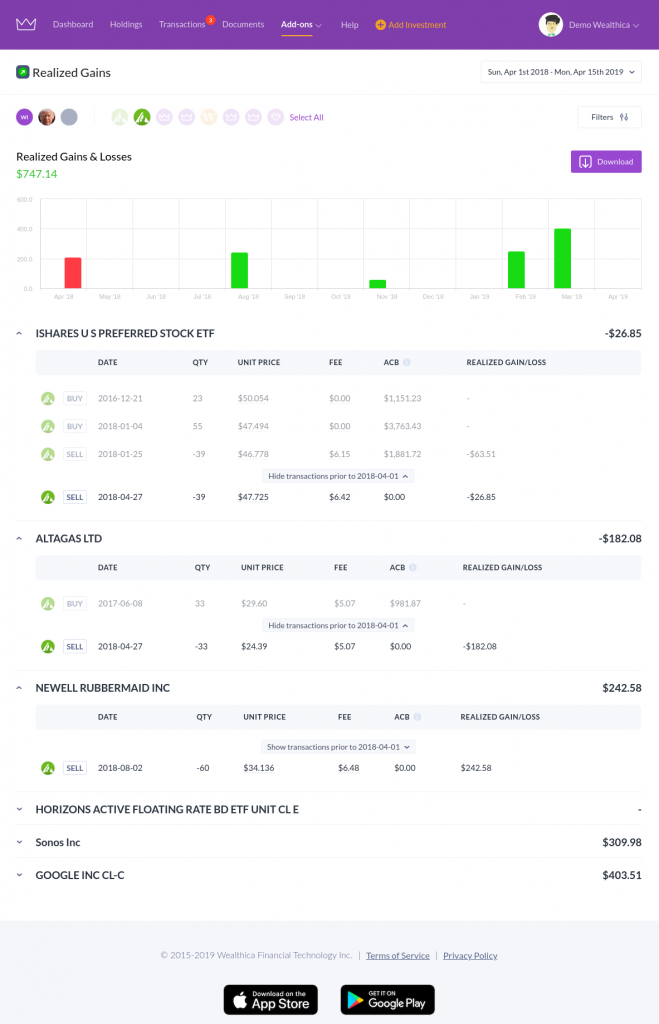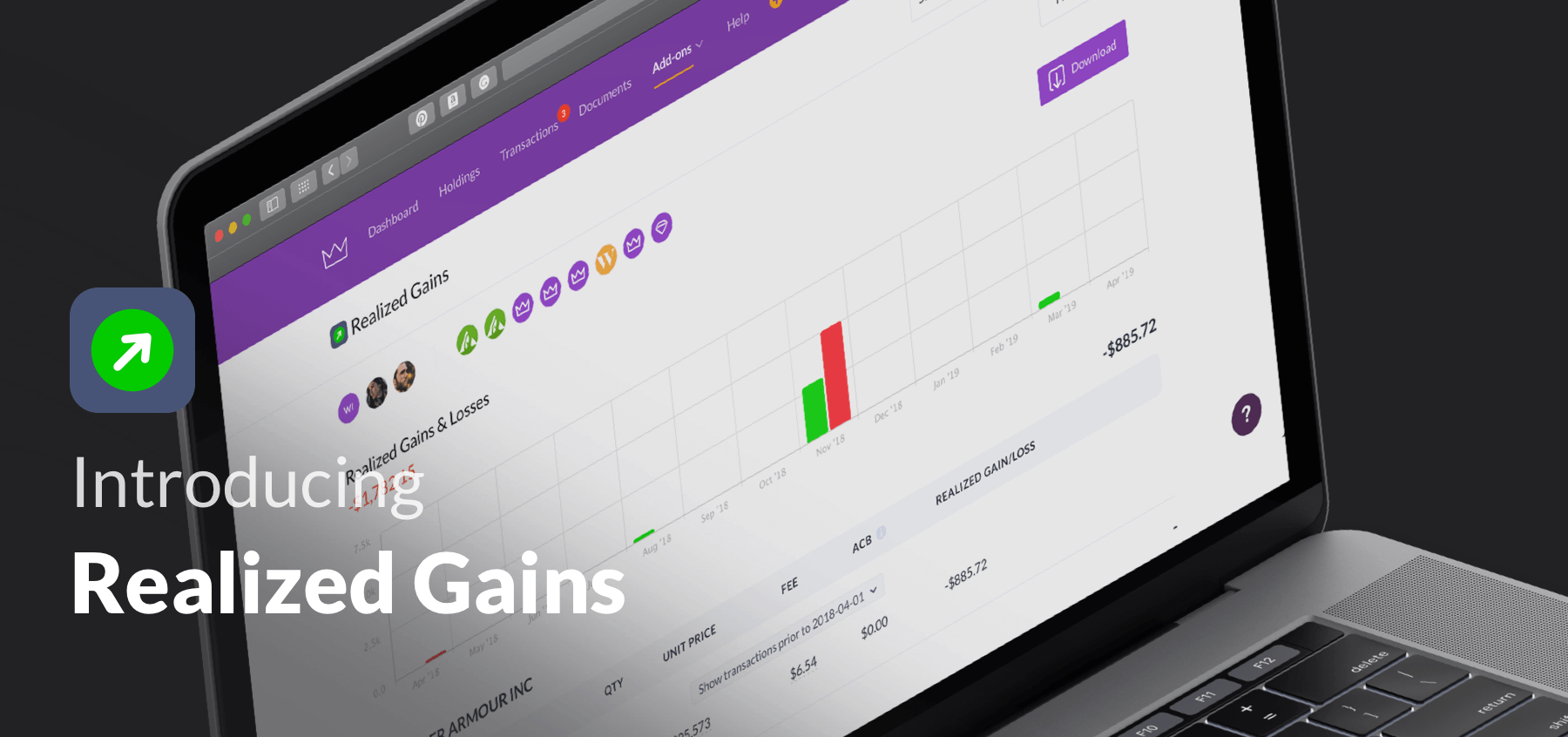Wealthica has recently enhanced its realized gains reports, now providing Adjusted Cost Base (ACB) to its users. In this article, we’ll brush up on those key concepts, and discuss the benefits of the ACB calculation method.
Realized Gains 101
Capital gains are profits on an investment. When you sell investments at a higher price than what you paid for them, the capital gains are “realized” and you’ll owe taxes on the amount of the profit (hence the commonly used expression “realized gains”). On the other side of the spectrum, a realized loss occurs when an asset which was purchased at a level referred to “as cost” or book value is then disbursed for a value below its book value.
In Canada, 50% of the value of any capital gains are taxable. If you have realized capital gains, you’ll need to add 50% of the capital gain to your income. Basically, this means the amount of additional tax you actually pay will vary depending on how much you’re making and what other sources of income you possess. If you have both capital gains and capital losses, you can offset the capital gains with capital losses until you reach a zero amount. If you only have capital losses, the CRA enables you to use the capital loss to offset a capital gain you originally declared in the previous 3 years, or you are allowed to carry forward the capital loss into the future.
Figuring out and tracking how much of your sale amount was made up of taxable earnings can be difficult; fortunately Wealthica can help.

The Benefits of Adjusted Cost Base (ACB)
Wealthica’s realized gains reporting uses the Adjusted Cost Base calculation method which is often simply referred to as “ACB”. It’s important to note that the Canada Revenue Agency (CRA) requires investors to use ACB when determining capital gains or losses for income tax purposes on Schedule 3. Also the ACB only matters for non-registered investments; when it comes to registered accounts it’s irrelevant because there are no capital gains taxes applied on such.
ACB is computed in the following manner: all of the costs related to the purchase of investments, including bonds, stocks, and mutual funds are factored in. Such also includes commissions and fees resulting from the purchase of assets, with the total overall cost divided by the shares of the asset. The adjusted cost base has to be recalculated as more shares are acquired or sold, including the associated transaction fees.
The ACB can be expressed as a formula:
ACB = initial investment + additional contributions + reinvested distributions – amount of any previous redemptions
In some cases, ACB is presented as ACB/unit:
Average ACB/unit = (initial investment + additional contributions + reinvested distributions – amount of any previous redemptions) / total number of units currently held
For example, let’s say you bought 100 shares of XYZ Corp. at $40 each and paid a commission of $20. Your ACB would be $4,000 (100 times $40) plus $20, or $4,020.
If you later sold all 150 XYZ shares for $50 each, with a $30 commission, your proceeds would be $7,500 (150 times $50) less $30, or $7,470. Your capital gain would be $7,470 minus $4,020, or $3,450.
In other words, ACB is a comprehensive and sound accounting method for tax purposes, and Wealthica’s realized gains reporting feature is an easy, automated way to utilize it. And best of all: it’s completely FREE.

